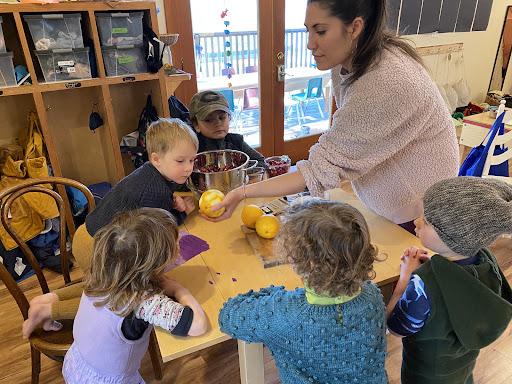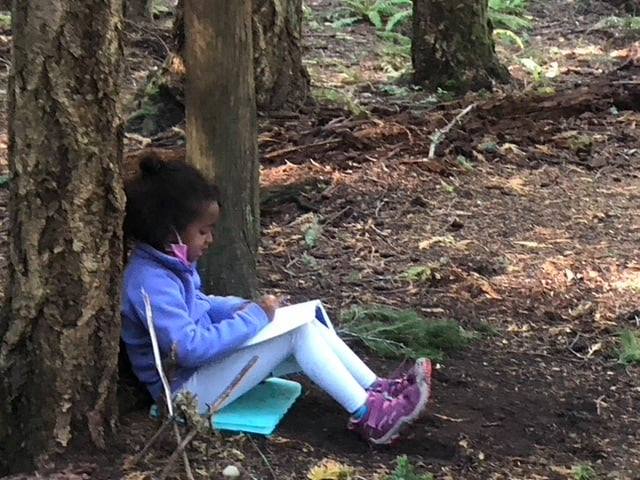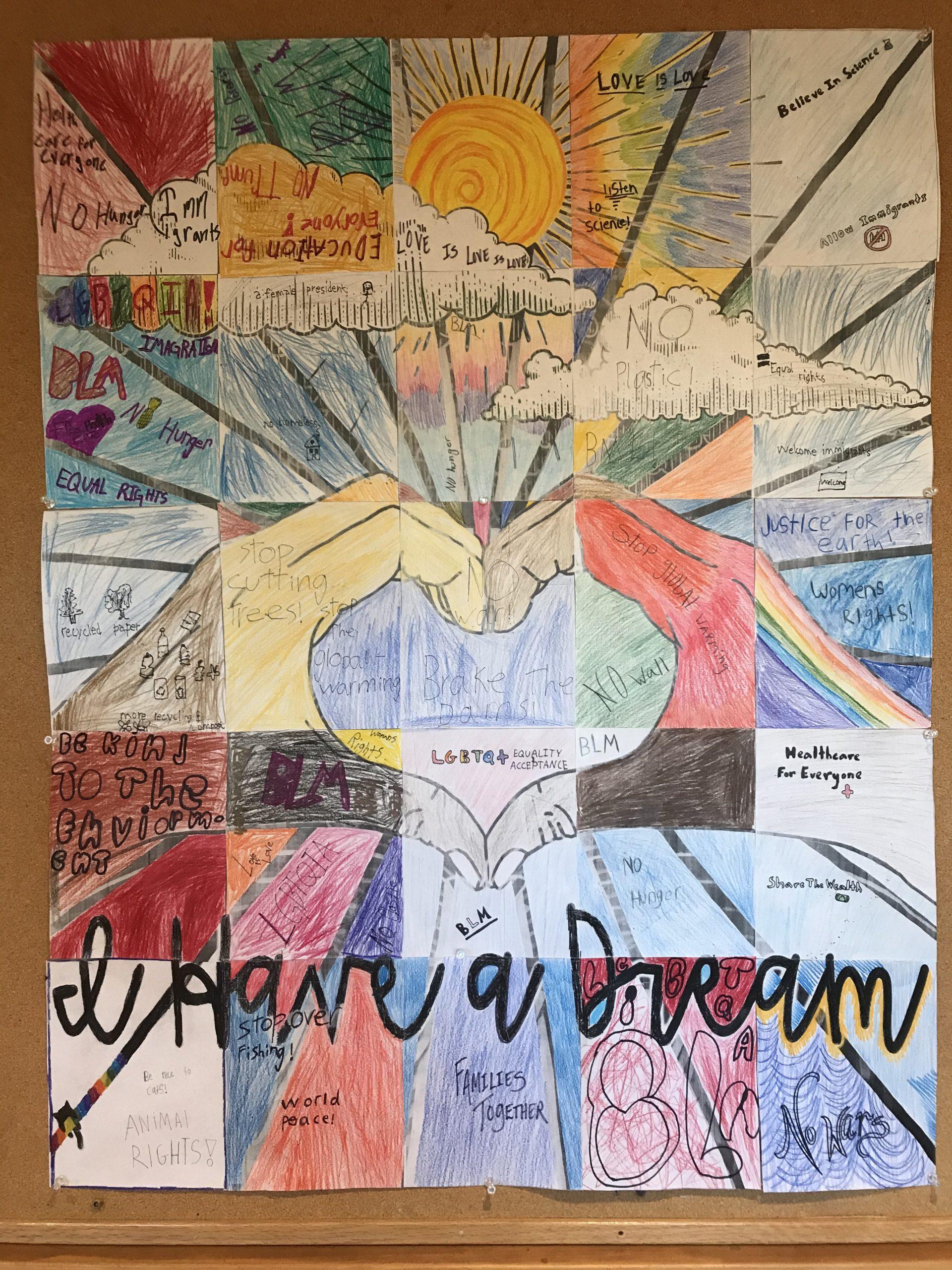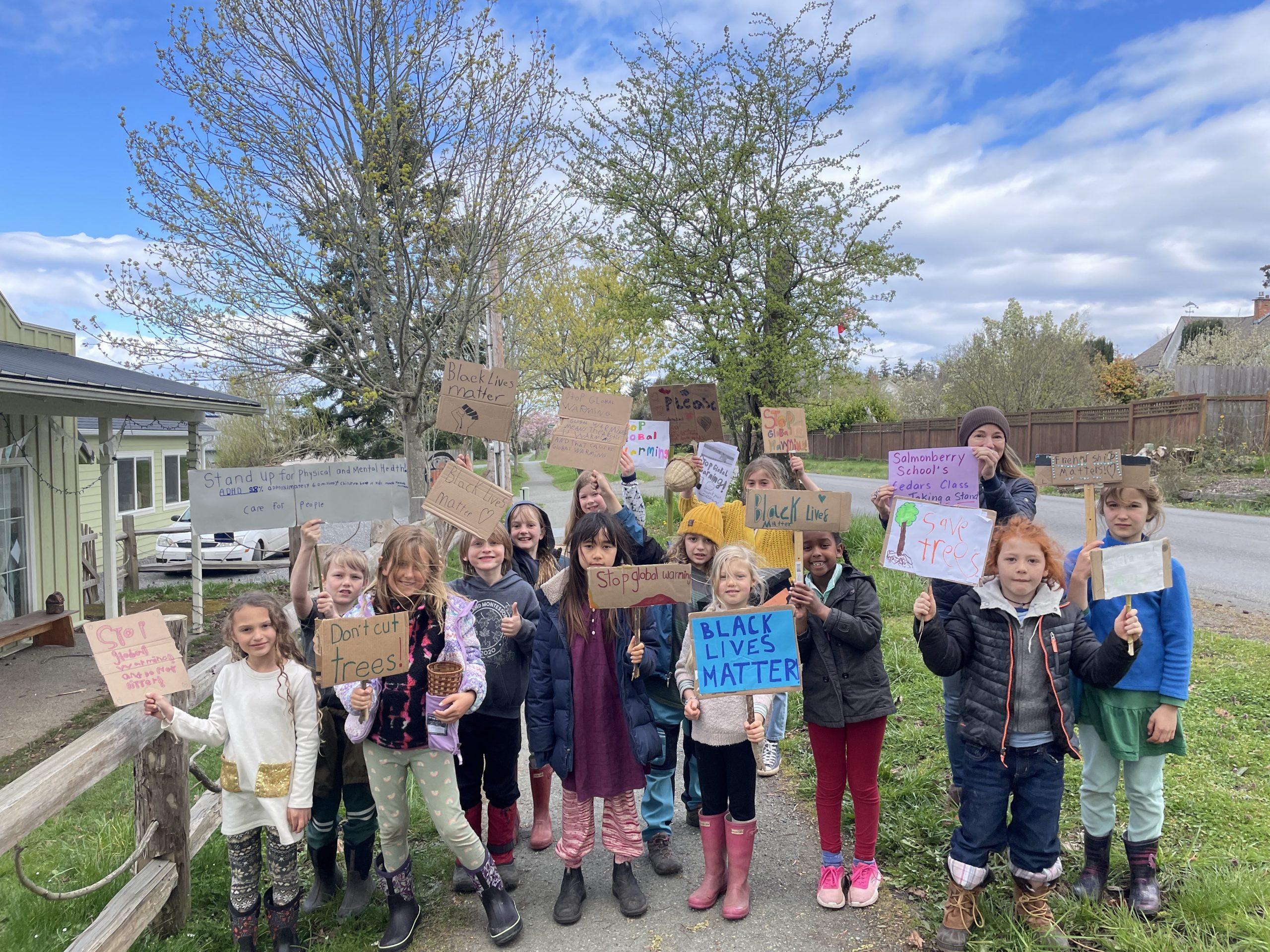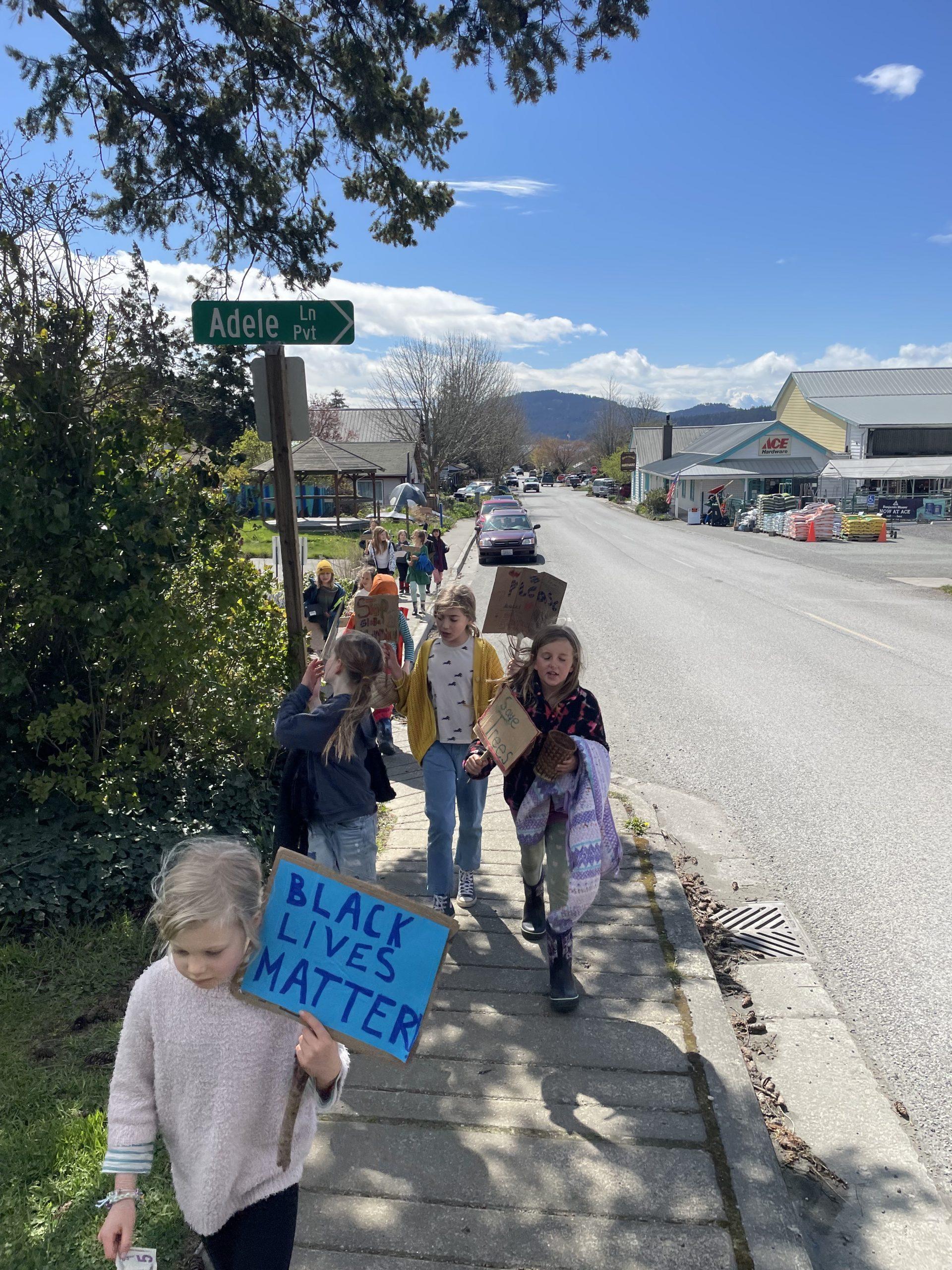Antiracism, Inclusion,
& Action
“Beloved community is formed not by the eradication of difference but by its affirmation, by each of us claiming the identities and cultural legacies that shape who we are and how we live in the world.”
–bell hooks
Salmonberry is working at every level of the organization to create a safe and inclusive learning environment for people of all backgrounds, gender orientations, races and ethnicities. We recognize that as a tuition-based school in a predominantly white community, we have an opportunity and obligation to dig into the essential work of examining all of our curricula and policies and working towards decolonizing our organization. We have not found all the answers to the critically important questions that this topic has raised for us as a school. We understand that we are very much on a journey towards becoming an antiracist community, and that there are still miles to go.
Salmonberry’s Antiracist Efforts
We recognize that at this historical moment, to “do no harm” is not enough. We recognize that in many ways Salmonberry School and its stakeholders have benefitted from participating in a society that is rife with institutional racism and inequity. We are making a concerted effort to critically evaluate our curriculum and educational practices and, with humility, consider ways in which our school may perpetuate cultural bias and racism.
Our Eagles class for example, for years had looked at curriculum’s highest imperative being to engage the students. As such, we used “simulations” that, for example, placed kids as travelers on the Oregon Trail, or fictional characters in Medieval Europe, or “Explorers” from Balboa to Lewis and Clark. Our perspective used to be that the details of the content didn’t really matter, that it was all about engagement. We now realize that this “neutrality” on race and power hierarchy allowed colonial values to permeate the school. We have redesigned the thematic curriculum at these grade levels to follow a three year cycle: Year 1 focuses on multiculturalism and world belief systems. Year 2 centers on taking a critical look at American history through an African American lens and considers the question, “Why do black lives matter?” Year 3 takes on indigeneity, and the cultures and worldview of indigenous peoples as well as immigration, and what it means to be an immigrant.
We once embraced the idea that the literature with which our older students engaged should reflect a balance of “mirrors” and “windows.” Our students should see themselves in the books they were reading, but also be exposed to characters, narratives and settings that were less familiar. Now, we simply no longer select titles that have white children as lead protagonists. We believe that our students receive plenty of mirrors in the culture that surrounds them. We now lean into windows. We try to open them wide, and breathe the air deeply. Our goal is to maximize the pedagogical potential for our curriculum to allow students to see and understand connections between each student and the much larger, diverse world and to understand the responsibility that comes with privilege.
What does inclusion look like at Salmonberry School?
Salmonberry School makes every effort to include a full panoply of faces and voices. People of all backgrounds, ethnicities, belief systems, socio-economic strata, gender orientations, identities, and races are welcome amongst our students, parents and Board. We realize, as a tuition-based independent school within a small, finite and largely white island community, our various stakeholders will tend towards homogeneity. It is all the more important that we reach towards inclusivity and the goal of diverse representation.
Salmonberry initiatives previously and currently in place have included the creation of a diversity scholarship to support enrollment for families from diverse backgrounds. We have allocated targeted and restricted funds to increase inclusivity within our classroom libraries. We reach towards bringing in diverse community voices as teaching staff, guest instructors, and featured programs.
We recognize the critical importance of inclusivity and also recognize that this is an area we must continue to grow into.
Action
Salmonberry believes that as we bring challenging subjects to kids’ awareness, it is critical that we offer and model ways we can take action to effect positive change. As part of our antiracist work, students have participated in many projects that support and encourage their prosocial impulses through activism.
Through an extended “Take a Stand” unit, students identified specific examples of injustice, and designed and implemented projects that would have a positive impact.
In a separate study that blended small business economics and craftsmanship, students created a business and raised funds that were donated to specific nonprofit charities.
When learning about the Civil Rights era, students participated in a simulated boycott. These students experienced the complexities of planning nonviolent direct action and also felt the emotional impact of group action to effect change.
When learning about drought and poverty in the Azawak region of Niger, students solicited supporters who pledged donations for a day-long “walk for water” that simulated the distance people in West African communities were walking to secure safe drinking water.
Our students have written letters to elected representatives, attended and spoken at local County Council meetings, sang at local gatherings raising awareness for equity and justice, participated in community peace vigils, and a number of other actions that allow our shared values to come to life through powerful visceral experiential learning.
